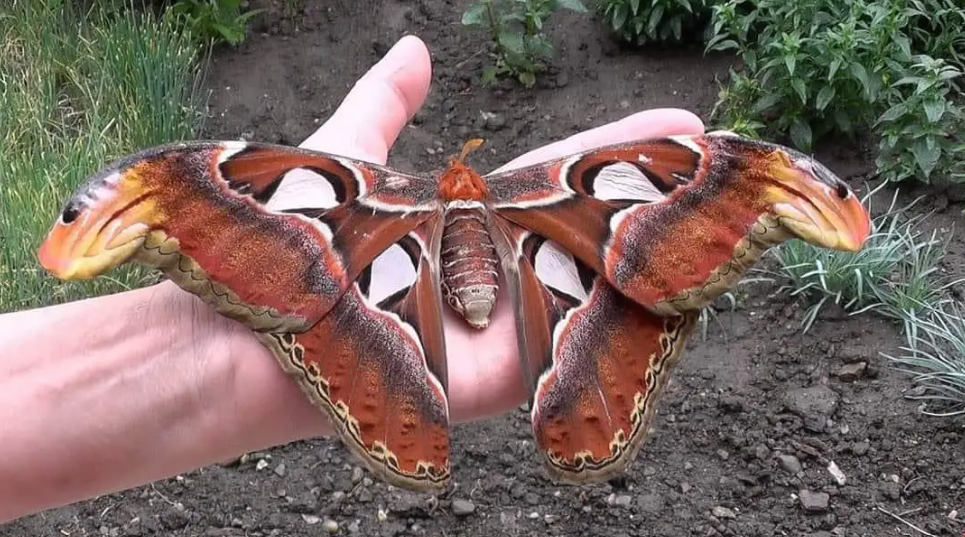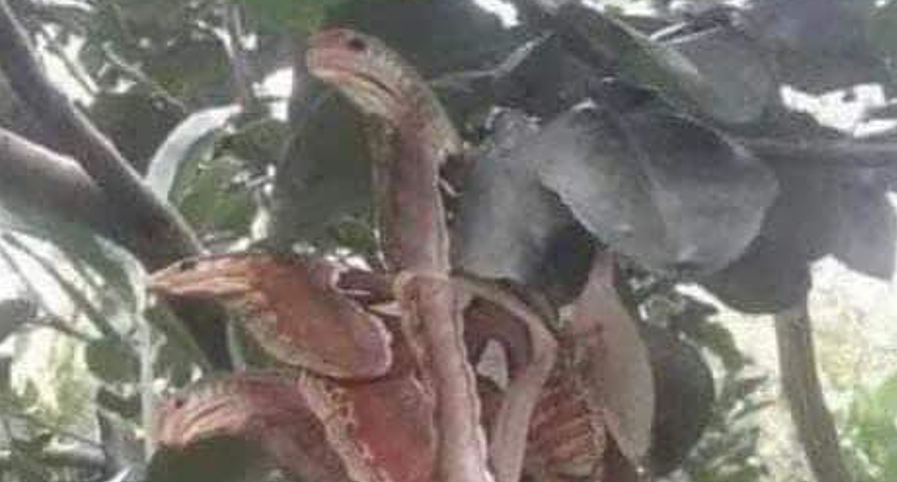The Atlas moth is far from an ordinary moth, distinguished by its impressive 9.4-inch wingspan and its remarkable ability to mimic one of nature’s most fearsome predators, snakes.
Native to Asian forests, this species was first documented by Carl Linnaeus in the 10th edition of Systema Naturae in 1758. Its wings boast a striking reddish-brown color, adorned with black, white, pink, and purple patterns. The forewings are particularly notable for their elongated tips that resemble a snake’s head. According to Luke Brown, manager of the Museum’s butterfly house, the Atlas moth mesmerizes everyone who encounters it, thanks to its vivid patterns and considerable size. The more we learn about this extraordinary species, the more we echo his sentiments.

Even during its caterpillar stage, the Atlas moth displays fascinating traits. The larvae feed continuously to gather energy for their transformation into pupae and adults, producing silk similar to that of cultivated silkworms. These caterpillars consume large quantities of food, initially feeding on their eggshells and then transitioning to leaves from citrus, guava, cinnamon, and Jamaican cherry trees.

In controlled environments like butterfly conservatories, several Atlas moth species are carefully monitored. Brown explains that the caterpillars are restricted to specific feeding areas to manage their high consumption rates, ensuring they accumulate enough fat reserves for adulthood. This practice prevents the depletion of plant life within the butterfly house.
The Atlas moth’s snake-like appearance instills fear in various predators, which serves as an effective defense mechanism. While some predators may eventually realize the moth is not a snake, the initial camouflage allows the moth to escape unharmed.
The unique patterns of these moths are the result of evolution and natural selection. Over time, those with snake-like features had a better chance of survival, passing on their advantageous traits to future generations.

Unfortunately, these remarkable insects face threats from habitat loss and deforestation, highlighting the importance of conservation efforts to protect them and their unique adaptations. What do you think of these incredible moths? Aren’t they breathtaking?
